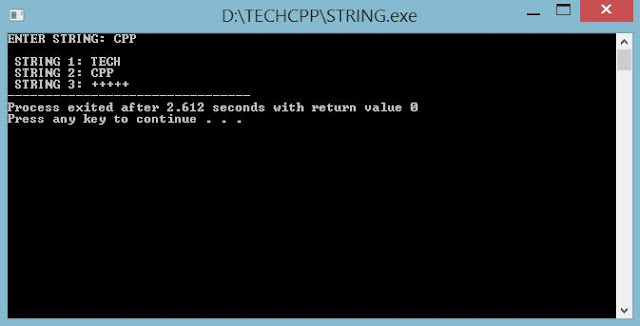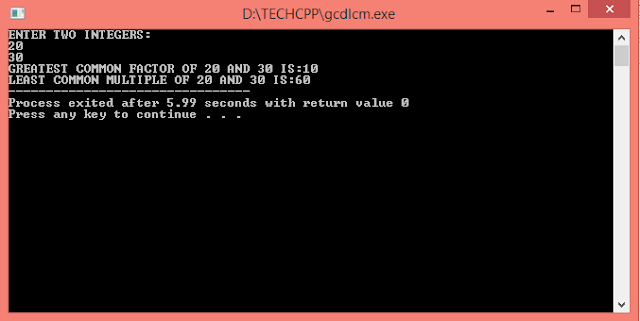ARMSTRONG NUMBER
A number of m digits is said to be an Armstrong number, if the sum of its each digit raise to the power m results in the original number.
For example,
5^1=5
(1^3) + (5^3) + (3^3) = 153
(8^4) + (2^4) + (0^4) + (8^4) = 8208
PROGRAM
// Program to determine whether given number is Armstrong Number or not
#include <iostream>
using namespace std;
int main()
{
int num ,n, sum=0, temp,count=0, power;
cout<<"ENTER NUMBER: ";
cin>>n;
num = n;
//To count number of digits
while(num>0)
{
count++;
num=num /10;
}
//Reassigning n to num
num = n;
while(num>0)
{
temp = num % 10; //Obtain the last digit of num
// Calculate power of obtained digit(temp)
power=1;
for(int i=0;i<count;i++)
{
power=power*temp;
}
sum = sum + power; //Rebuilding number
num = num /10; //To remove the last digit
}
if(sum==n)
{
cout<<n<<" IS AN ARMSTRONG NUMBER";
}
else
{
cout<<n<<" IS NOT AN ARMSTRONG NUMBER";
}
return 0;
}
OUTPUT














